Router mortising is very practical for small shop woodworking because it is efficient, produces great results and uses a highly versatile tool — the router. In this post, we’ll look at the type of router you need for mortising, including some specific recommendations, and the right bits to use.
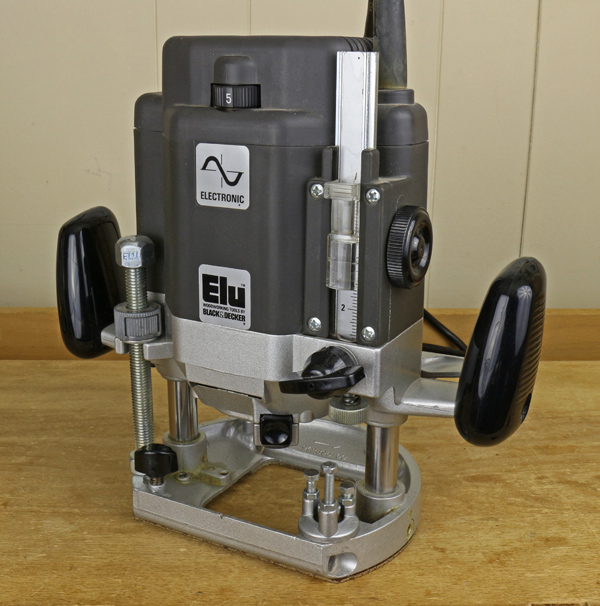
Plunging into router mortising
A plunge router is the tool of choice for router mortising in the small woodshop. This type of router differs from a regular fixed-base router in that the motor assembly can move up and down on steel posts while routing. This allows you to plunge the rotating bit downward into the wood, lock that vertical position, then push the router to make the bit cut horizontally. Guided by various jigs, this is exactly the action required to cut a mortise. Successive passes of plunging plus guided horizontal travel will produce a very clean, accurate mortise.
The photo below shows a fixed-base router on the left and a plunge router on the right. Note that the fixed-base router, of course, has a vertical adjustment mechanism, but this is set before routing and is never used for plunging while routing. Though each of these routers has a motor rated at 12 amps (120V), the plunge router is larger because of the plunge mechanism and has more widely spaced handles.
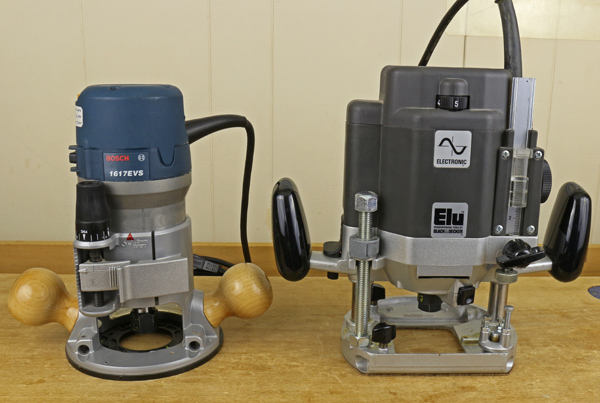
The plunge router is shown in its highest position in the photo immediately below and in its lowest position in the following photo. The total travel is about 2 1/2″, which is typical for these machines.
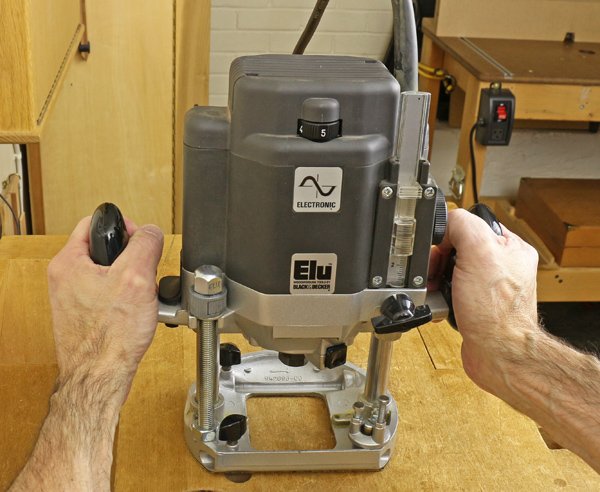
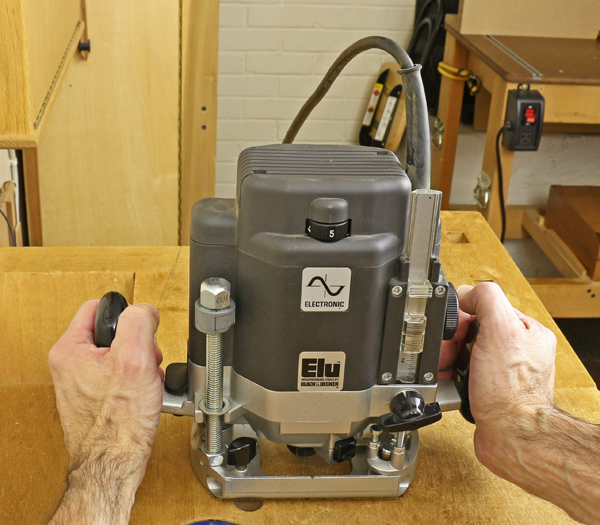
Quality features in a plunge router start with the motor. Look for at least a 10-amp/2-HP motor to rout the mortises typically required in making furniture. The plunge action must be consistently smooth. Sticking is frustrating and potentially dangerous. Ergonomics and switch location are important, so it is best to assess these hands-on and feel what suits you. The plunge stop mechanism should be intuitive and reliable.
The router collet is holding a sharp bit that is spinning at 25,000 RPM with the power of two horses so there is no room for compromise in quality. A three-piece self-releasing collet is the best design to prevent the bit from slipping and also allow its easy removal.
Shown below is the inner collet piece with several slits that make it flexible to grip bits securely. Its slight taper fits into a matching recess in the router’s arbor (the third piece). The nut snaps into the top rim of the collet and tightens the bit-collet assembly, and actively lifts it outward when loosening to remove the bit.
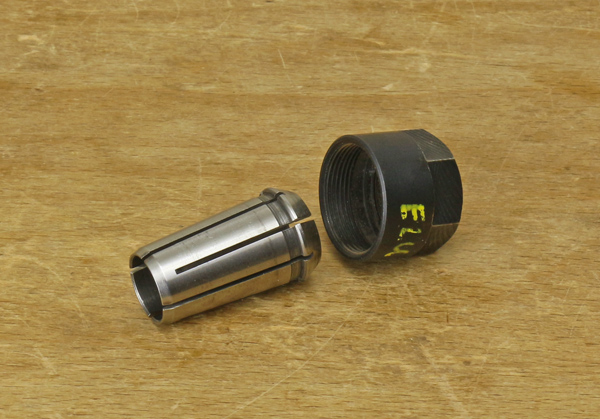
Recommendations
These two excellent 2 1/4 HP combination router packages, each available for under $200, have the advantage of using a single motor in both a fixed and plunge base. The DeWalt DW618PK is the 618 fixed-base router plus the DW6182 plunge base. Similarly, the Bosch 1617EVSPK is the 1617EVS fixed-base router plus the RA1166 plunge base.
The DeWalt router has integral dust collection on the plunge column. Though the Bosch lacks this helpful feature, the 1617EVS motor can be used with the optional RA1165 base, which has an excellent micro depth adjuster designed for convenient use in a router table setup.
The 12-amp Elu router shown above has held up well over the years and is nearly identical to the current big DeWalt model DW625, which has a 15-amp motor. The DW621 is another excellent, somewhat lighter, dedicated plunge router with integral dust collection, which the 625 lacks.
Bits matter
When mortising, the router bit must cut downward like a drill bit and cut laterally like a regular router bit. Upcut spiral bits do both very well and also have the advantage of pulling chips out of the cut much as a drill bit does. The durability and stiffness of solid carbide make it an excellent material for these bits. High-speed steel, though initially somewhat sharper, will not last nearly as long.
Shown below, left to right, are 3/8″, 5/16″, and 1/4″ diameter solid carbide upcut spiral bits. The larger bits have 1/2″ shanks and the smallest bit has a 1/4″ shank. This type of bit is widely available in diameters up to 1/2″ to cover nearly all furniture making needs.
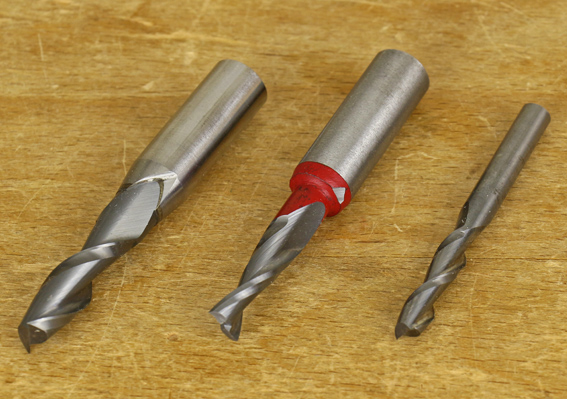
In the close-up photo below, note the spiral bit on the left is designed so the end can cut down into the wood. It can plunge cut. The standard carbide-tipped straight bit on the right cuts well laterally but its end does not plunge cut. Lacking spiral flutes, it also does not efficiently clear chips while cutting a deep mortise.

In upcoming posts, we’ll look at effective, inexpensive setups for mortising with the router.
[box type=”shadow”]
[one_half_last]
Learn essential router techniques. Cut clean profiles, flush-trim face frames and create solid joinery in Bluprint’s Handheld Router Techniques & Tips class.
[/box]
What makes online Bluprint classes great?

Learn for life! With lifetime access to your classes, you can watch lessons at your preferred pace and easily revisit your favorite concepts with just a click.

Kick up your feet! Enjoy classes anytime from the convenience of your home or even on-the-go with our mobile apps.

Get personalized guidance! Ask your instructor questions to receive all the answers and feedback you need to succeed.

Love it! There’s no risk in trying with our 100% money back guarantee.

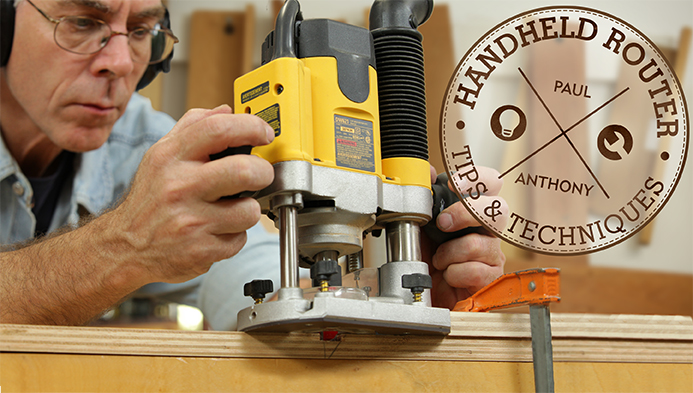
Share tips, start a discussion or ask one of our experts or other students a question.
No Responses to “Router Mortising: Plunge Routers and Bits”